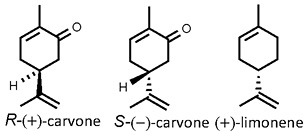 Carum carvi
Carum carvi
caraway
Back to “Salad herbs and herb mixtures: caraway (Carum carvi)”
Back to “Culinary herbs: caraway (Carum carvi)”
Back to “Spices: caraway (Carum carvi)fr”
Carum carvi L. (Apiaceae); karwy (Afrikaans); fang feng, se lu zi (Chinese); carvi (French); vilayati jeera (Hindi); Kümmel (German); carvi, cumino Tedesco, caro (Italian); karahe, kyarawei (Japanese); kaereowei, kaerowei (Korean); kminek (Polish); tmin (Russian); alcaravea (Spanish)
DESCRIPTION The small, ripe fruits (“seeds”) are pale brown, and each comprise two narrowly oblong and often slightly curved halves (mericarps), with prominent corky ribs along their length. They have a mild, spicy aroma and a bitter, somewhat peppery taste. Caraway has often been confused with the similar-looking cumin, as can be seen in vernacular names that originally referred to cumin (derived from the Latin Cuminum), such as Kümmel (German). Similarly, the Hindi name jeera is sometimes used for caraway but actually refers to cumin and black cumin (see Cuminum cyminum).
THE PLANT Caraway is a biennial herb with feathery, bipinnately compound leaves and umbels of small white flowers that appear in the second year. It grows to a height of 20 cm (8 in.) in the first year and about 60 cm (2 ft) in the second year.
ORIGIN The plant is indigenous to central Europe, the Mediterranean region and western and central Asia.1,2 The fruits have been found in Neolithic villages, indicating that its culinary uses may date back to ancient times.2 The Romans used the roots as a vegetable. Caraway is now a popular spice in many parts of the world.
CULTIVATION Plants are easily grown from seeds. They require full sun, rich, well-drained soil with a neutral pH and regular watering. In cold regions, the one-year-old plants are protected by mulching them in winter. Commercial cultivation occurs in eastern Europe, Germany, Finland and the Netherlands but most of the spice now originates from North Africa (especially Egypt).3
HARVESTING Fruits ripen in the second year and are harvested when they ripen and turn brown.
CULINARY USES Caraway is a typical spice of German-speaking countries and is an important flavour ingredient of rye bread, sauerkraut, Schweinsbraten (roast pork), goulashes, vegetables, potatoes, cheeses (e.g. Munster), cakes and biscuits as well as alcoholic beverages such as kümmel, schnapps and vespétro.4 In the Netherlands, it is an ingredient of Leyden cheese, the most common type of kominjekaas. It is also a popular spice in Scandinavia, used to flavour food, confectionery, cheeses (e.g. Swedish bondost and Danish harvati) and beverages (akvavit). In France, caraway is used to flavour dragées (sugar-coated almonds).4 In Britain it is often included in pickles and cabbage and traditionally served as a condiment (in a small dish) along with baked apples.2 It is popular in confectionery (e.g. British caraway seedcake and Serbian scones) and desserts (e.g. Middle Eastern caraway pudding).
FLAVOUR COMPOUNDS The warm, aromatic flavour of caraway fruits is due to essential oil rich in R-(+)-carvone (60%) and limonene (40%)5. S-(–) carvone smells like spearmint and is the main compound of spearmint oil (see Mentha spicata). Only the R-enantiomer of limonene occurs in nature.

NOTES The fruits and essential oil are used to alleviate flatulence and stomach complaints.
1. Mabberley, D.J. 2008. Mabberley’s plant-book (3rd ed.). Cambridge University Press, Cambridge.
2. Kiple, K.F., Ornelas, K.C. (Eds). 2000. The Cambridge world history of food. Cambridge University Press, Cambridge.
3. Farrel, K.T. 1999. Spices, condiments and seasonings. Aspen Publishers, Gaithersburg, USA.
4. Larousse. 1999. The concise Larousse gastronomique. Hamlyn, London.
5. Harborne, J.B., Baxter, H. 2001. Chemical dictionary of economic plants. Wiley, New York.